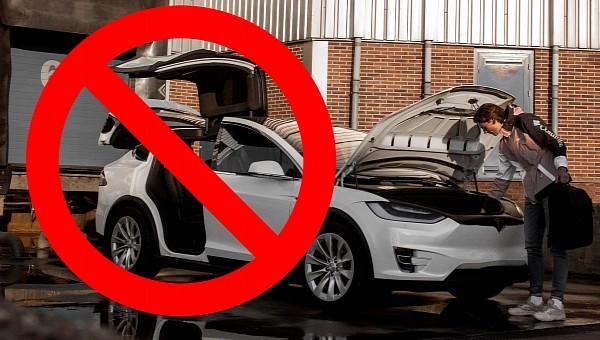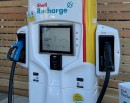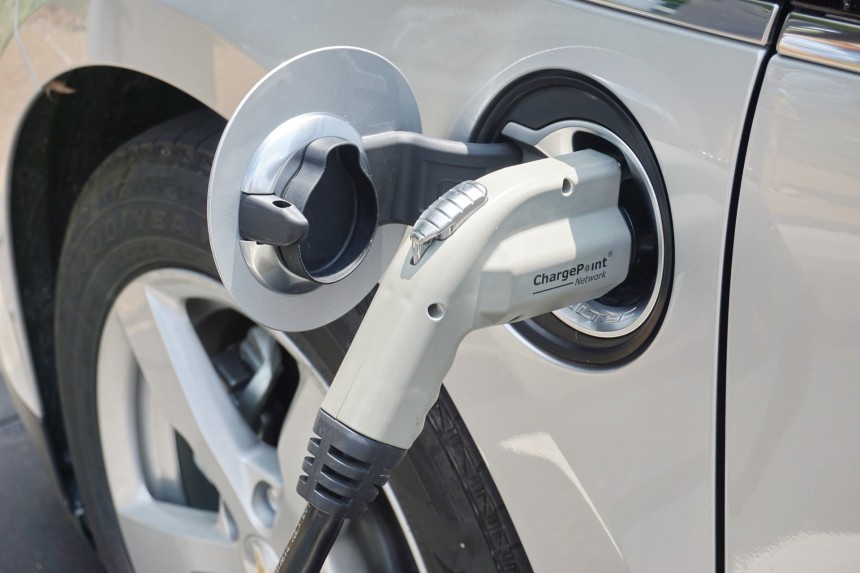
Photo: Jorgen Hendriksen on Unsplash / Clker-Free-Vector-Images on Pixabay / autoevolution edit
Most of Florida’s coastlines are prone to hurricane strikes, with Miami, West Palm Beach, Naples, and Fort Meyers being the most frequently struck areas. In the last couple of years, EVs have been increasingly attractive for Americans living in the Sunshine State. These facts put a senator on the fence about all-electric cars and their usability in emergencies. Here’s what he asked Florida’s transportation to consider before the hurricane season begins in May or June.
Florida senator Jonathan Martin is worried that EVs might create roadblocks during hurricane evacuations. The lawmaker argues that a lack of charging infrastructure might lead to these cars emptying their batteries and remaining stranded on the side of the road, effectively blocking others from going to the nearest unaffected area.
Martin underlines that the Department of Transportation should somehow limit EV owners from using their cars when they must evacuate. In his opinion, all-electric cars might turn a two-hour trip into an eight-hour one because there aren’t enough chargers in the state to satisfy everyone’s energy needs. Until the NEVI funding kicks in and the charger development starts, the senator’s concern is that the current infrastructure is too weak to support everyone while they must join high-speed roads.
A Florida Department of Transportation (FDOT) said the matter will be discussed with the relevant agencies, but pointed out they would prefer to help everyone during evacuations rather than put more barriers on mobility during stressful times.
The same source explained that the FDOT is looking to stock up on portable chargers and have gas-powered vehicles that can be deployed during an emergency to help everyone in need, including EV drivers, as Tampa Bay Times reported.
It’s worth mentioning that hurricane evacuation alerts are put out promptly, which could theoretically give enough time for EV owners to replenish their vehicles’ energy storage units. Besides that, the coverage of such an event is extensive and most people who have radio, TV, or internet access learn about such a dangerous natural phenomenon in due course.
According to the Department of Energy (DoE), Floridians are warming up to zero-tailpipe emission vehicles at the second-fastest rate in the country. They are behind Californians in this respect. Last year, for example, the number of electric vehicles registered in Florida almost doubled. But this should not enough to worry everyone about potential charging issues in emergency scenarios because EVs currently account for just a little over 1% of all the cars on the Sunshine State’s roads.
Moreover, it’s important to remember that EVs lose most of their range while traveling at high speeds for longer periods. When stuck in traffic, the energy consumption is low, and the overall efficiency increases because the motors aren’t put to too much work. That’s why we see vehicles like the BMW i4 eDrive40 having a higher real range estimation for urban driving (416 mi/670 km) than for highway use (273 km/ 440 km) in mild weather. The lack of an exhaust system is also helpful when queueing because no harmful pollutants are emitted while waiting for traffic to clear.
Finally, Florida is set to receive almost $200 million in federal funding to develop the charging infrastructure according to the NEVI guidelines. This means EV owners will enjoy charging stations and high-power chargers (150 kW minimum) situated no more than 50 mi (80 km) apart from each other and no farther than one mile (1.6 kilometers) from any alternative fuel corridor which means that almost the entire Interstate network will be covered until 2028.
Martin underlines that the Department of Transportation should somehow limit EV owners from using their cars when they must evacuate. In his opinion, all-electric cars might turn a two-hour trip into an eight-hour one because there aren’t enough chargers in the state to satisfy everyone’s energy needs. Until the NEVI funding kicks in and the charger development starts, the senator’s concern is that the current infrastructure is too weak to support everyone while they must join high-speed roads.
A Florida Department of Transportation (FDOT) said the matter will be discussed with the relevant agencies, but pointed out they would prefer to help everyone during evacuations rather than put more barriers on mobility during stressful times.
The same source explained that the FDOT is looking to stock up on portable chargers and have gas-powered vehicles that can be deployed during an emergency to help everyone in need, including EV drivers, as Tampa Bay Times reported.
According to the Department of Energy (DoE), Floridians are warming up to zero-tailpipe emission vehicles at the second-fastest rate in the country. They are behind Californians in this respect. Last year, for example, the number of electric vehicles registered in Florida almost doubled. But this should not enough to worry everyone about potential charging issues in emergency scenarios because EVs currently account for just a little over 1% of all the cars on the Sunshine State’s roads.
Moreover, it’s important to remember that EVs lose most of their range while traveling at high speeds for longer periods. When stuck in traffic, the energy consumption is low, and the overall efficiency increases because the motors aren’t put to too much work. That’s why we see vehicles like the BMW i4 eDrive40 having a higher real range estimation for urban driving (416 mi/670 km) than for highway use (273 km/ 440 km) in mild weather. The lack of an exhaust system is also helpful when queueing because no harmful pollutants are emitted while waiting for traffic to clear.
Finally, Florida is set to receive almost $200 million in federal funding to develop the charging infrastructure according to the NEVI guidelines. This means EV owners will enjoy charging stations and high-power chargers (150 kW minimum) situated no more than 50 mi (80 km) apart from each other and no farther than one mile (1.6 kilometers) from any alternative fuel corridor which means that almost the entire Interstate network will be covered until 2028.







